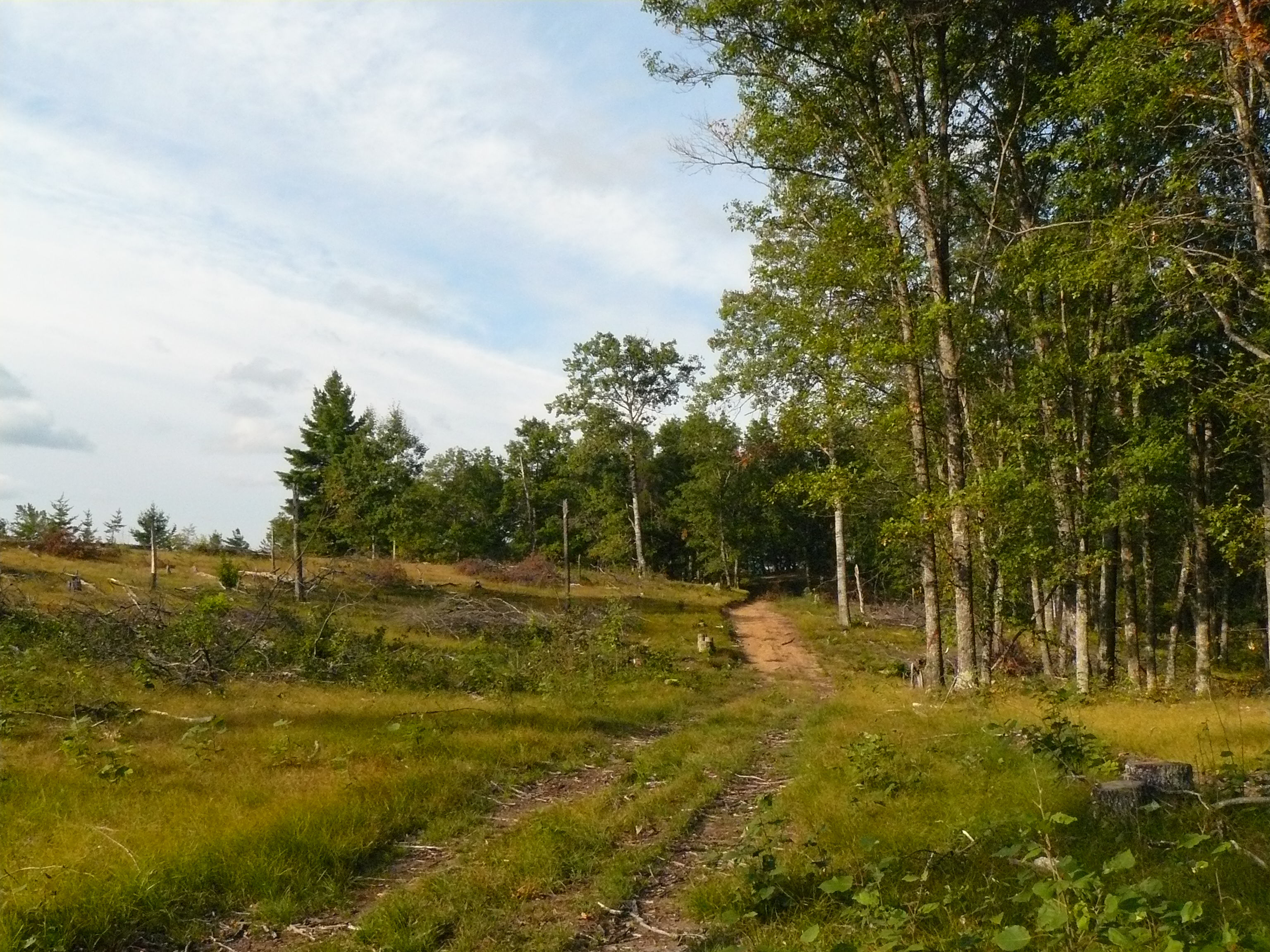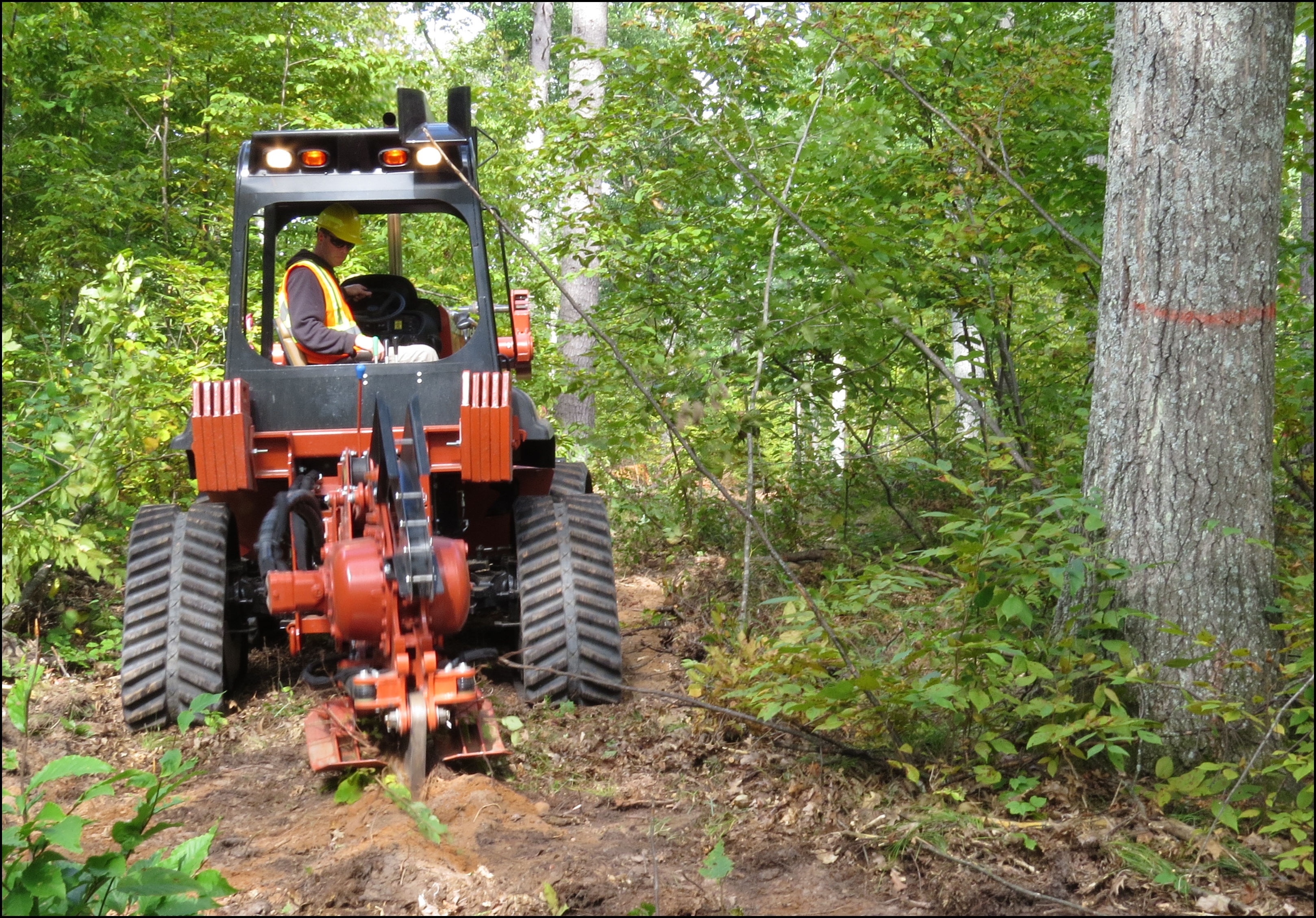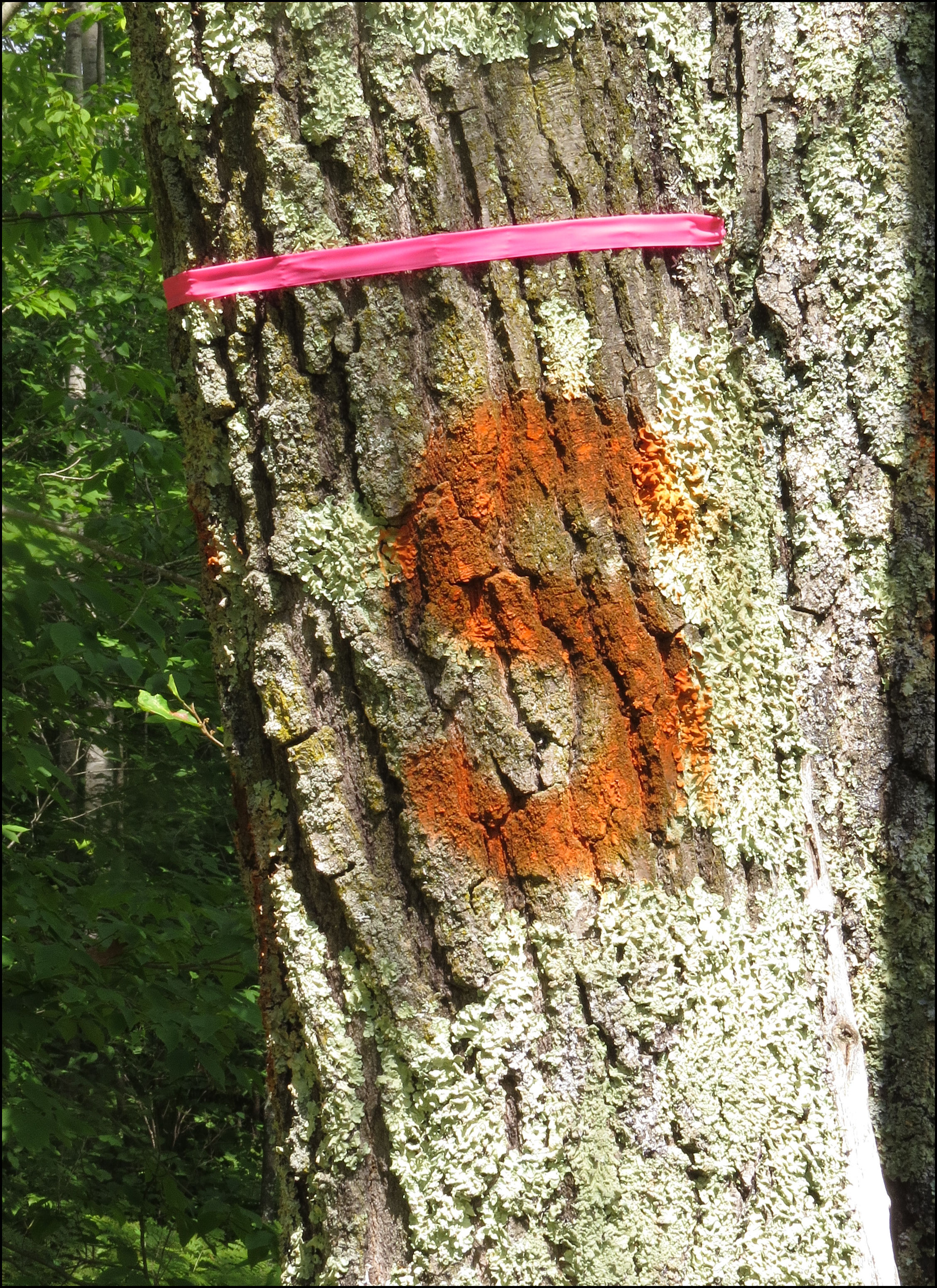Oak wilt treatment success
Oak wilt treatments were implemented on state land in the Upper Peninsula of Michigan for a three-year period 2014-2016. Sites were monitored for control success. They tell an interesting story.

Oak wilt is a pernicious exotic disease that has expanded across much of Michigan and Wisconsin. It’s been around for decades, however. Its presence has captured the attention of many conservation groups and has led to seasonal timber harvest restrictions. It’s a tough disease to control and typically involves significant changes in the visual quality of a forest stand.
Oak wilt spreads throughout an oak stand via underground root grafts. It’s this research-based distance of underground spread that determines the “footprint” of an infected area (aka epicenter). Containing the underground spread and removing the oaks within the perimeter of this footprint is the treatment goal.

Post-treatment boundary in a stand nearly pure to oaks.
The trees that present a threat of overland transmission, via sap-feeding insects, are those oaks that died the previous growing season. The pathogen kills the tree in one year, then produces fruiting bodies on the dead oaks the next year. This is why recently-killed trees require quarantine or prompt destruction.
From 2004 through 2013, over 200,000 feet of trenching was done, on both public and private forestland in Menominee and Dickinson Counties, with some epicenter complexes well over 40 acres. Over this decade, many of the largest oak wilt areas were treated, which reduced the potential for overland spread.
Untreated areas produce new spore-producing trees each year. The presence of this “inoculum” results in new epicenters in previously healthy oak stands. As fewer acres of oak wilt exist in the landscape, the level of inoculum goes down, reducing the risk of new infections.

Vibratory plow with a blade cutting five feet into the ground.
For three years, from 2014 through 2016, about 116 sites were treated on state land in Menominee County. These were all small epicenters, the aftermath of the previous decade of aggressive treatments in the region. The average size was about 1.5 acres, employing 2339 feet of root-severing trenching. Each of these sites are to be monitored for at least three years.
After two to four years of monitoring, with one more year to go (2019), there are four sites where the treatment may have failed. That’s a success rate of almost 97 percent. There is some uncertainty about whether the four failures are actually failures. Oak wilt can spread overland, beyond the footprint perimeter, to an outlier tree that shows no symptoms during the set-up period, which is best done in late August. It’s also possible the technician missed an outlier tree during the reconnaissance.
During the monitoring period since 2016, another 28 new sites with dead or dying oaks were observed while visiting treatment sites, although reconnaissance was not part of the monitoring goals. The 17 sites from 2017 displayed diagnostic spore mats and pressure pads in 2018. The 11 sites in 2018 were assumed to be infected with oak wilt. Almost all of these new sites were the result of wind damage, such as broken limbs, windthrow, and wounds from nearby falling trees.

A potential spore producing tree marked for special handling.
While forest management recommendations continue to evolve, there are possible conclusions and suggestions as a result of the monitoring of the 2014-2016 sites and other experience:
- Treat oak wilt epicenters as soon as possible.
- Commercial harvest of small areas is difficult for a private forestowner.
- Avoid wounding oaks from mid-April through mid-July.
- New epicenters are often the result of wind damage. Inspect your woodland after significant wind events. Remove damaged oaks as soon as possible. Do not wound standing oaks in the process.
- Consider the risk of leaving a stand of residual large oaks in areas with oak wilt in the landscape. They’re more susceptible to wind damage.
- Single-tree infections, caught soon enough, can be effectively treated by stump-pulling.
- For more advanced epicenters, but still small, a double-girdling / herbicide technique has shown some success.
- Injections by certified applicators can protect healthy oaks, but cannot save infected oaks.
- Rapid leaf browning and total mortality (within a month or so) suggests oak wilt. Wilting leaves often have a distinct border between the green and the brown. However, only a lab tissue culture or the presence of fruiting bodies (from dead oaks the year before) are diagnostic for oak wilt. There are damaging agents that resemble oak wilt symptoms.
If you suspect oak wilt on your woodland property, contact a forester (or several). Many County Conservation Districts house a service forester. All areas of Michigan and Wisconsin have nearby consulting foresters. University Extension and state natural resource agency websites and other Internet sources contain relevant information. However, keep in mind that not all foresters are familiar with oak wilt and not all “experts” are experts.



 Print
Print Email
Email




